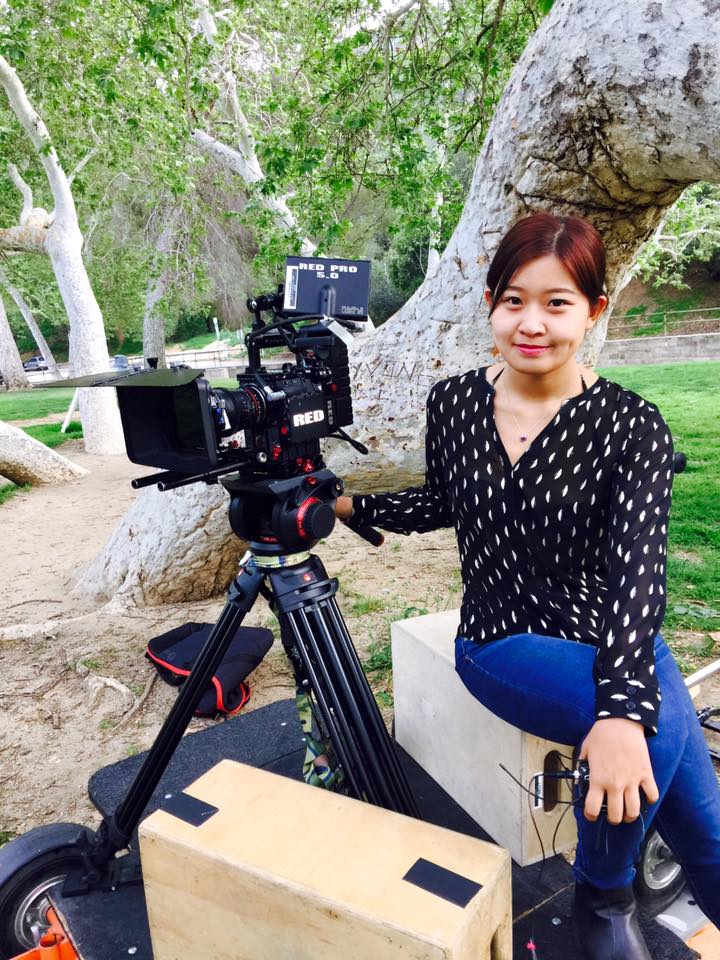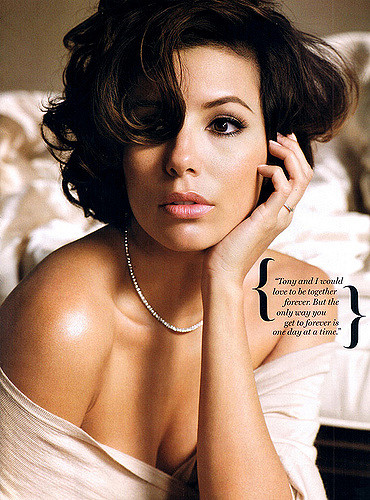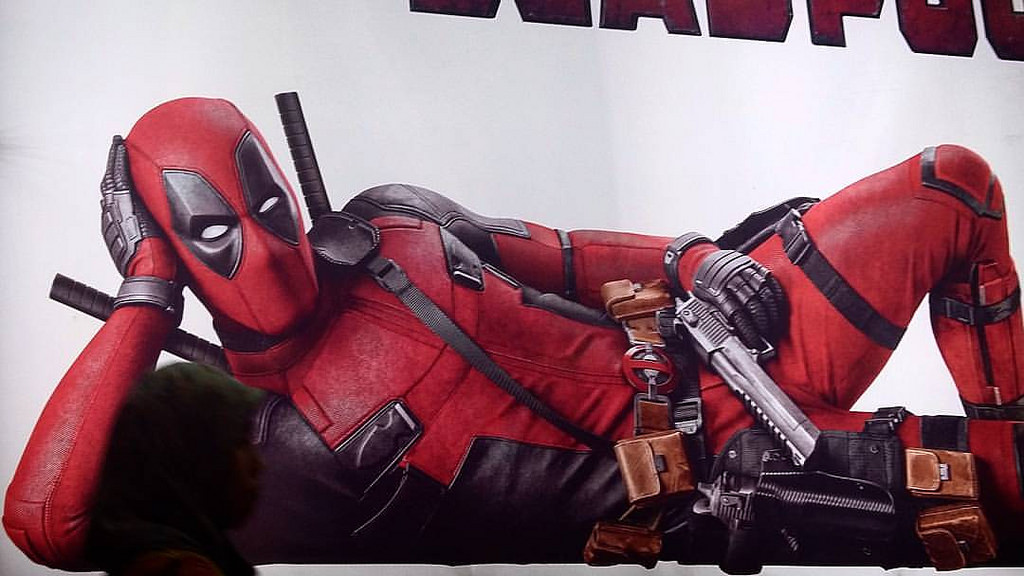People in showbiz tend to be rather multi-talented, or perhaps that’s just a survival strategy. Either way, if you can sing, dance and act, chances are you can make it big. Elvis Presley’s enduring legacy may have much to do with the fact that he not only revolutionized music, but also starred in several films that were quite successful.
Many musicians have turned to acting. Billie Joe Armstrong, better known as Green Day’s frontman, did cameo roles in some films but received critical acclaim when he played St. Jimmy in the Broadway adaptation of the band’s concept album “American Idiot.” And on the other end of the spectrum, there are talented actors like Johnny Depp, for whom music is a parallel pursuit, side project or hobby.
So, while you gear up for Coachella 2017, we bring you a list of our favourite musicians-turned-actors for inspiration. Who knows, you may end up liking their films as much as you adore their music!
1. David Bowie
The quintessential icon of androgyny and experimentation, Bowie’s artistry not only included innovating within several music styles and fashion trends, but also within acting as well. Two of his most well-known films have achieved cult status: “The Labyrinth”(1986) and “The Hunger”(1983). In the former, he plays an attractive but subtly evil Goblin King and in the latter, he’s an unconventional vampire. In recent years, he’s also played Nikola Tesla in Nolan’s award-winning film “The Prestige” (2006).
2. Madonna
An enduring legend who’s been working in the music industry from the late ‘70s, Madonna is also quite the charming actress, especially when it comes to romantic movies. Although most of her films weren’t that successful, she earned a Golden Globe for her role in “Evita” (1996), and “Desperately Seeking Susan” (1985) was listed by the New York Times critic Vincent Canby as one of the 10 best films of the year.
3. Jared Leto
Most artists tend to be successful at one particular area. But Leto’s made a name for himself not only as the lead singer of the band 30 Seconds To Mars, but also as a dependable Oscar-winning actor. He’s a method actor and is very selective in his choice of roles, such as playing a transgender woman in “Dallas Buyers Club” (2013) and the Joker in “Suicide Squad” (2016).
4. Will Smith
Smith was initially the MC of the hip duo DJ Jazzy Jeff & The French Prince, who won their first Grammy way back in 1988. Now he’s one of the most successful African American actors in Hollywood, with hit films like “Independence Day” (1996), “Men In Black” (1997) and “The Pursuit of Happyness” (2006).
5. Jon Bon Jovi
The lead singer of one of the most popular rock bands out there, Jon Bon Jovi has experimented with a variety of acting roles, both in film and television. One of his earliest film roles was playing the painter in “Moonlight and Valentino”(1995). He also played a vampire hunter in “Vampires: Los Muertos” (2002), a teacher in the horror film “Cry Wolf” (2005), and a rockstar in “New Year’s Eve” (2011).
Are you someone who loves singing and acting, and can’t choose which one to focus on? Then be inspired by these artists who have the best of both worlds. Study musical theatre or acting for film at New York Film Academy.
Pilot Season: It’s Pilot Season, Here Is What’s Coming Your Way
Every new season, it’s exciting to see which new actors, directors, and shows are coming to your television. For students, it’s especially inspiring to watch new talent on the screen — you never know what will inspire your imagination next. Here are a few new pilots that you absolutely can’t miss this season.
“Black Lightning”
For superhero fans, here’s a new offering from DC Comics that’ll premiere this season on the CW. “Black Lightning” stars Cress Williams as Jefferson Pierce, a retired superhero who gets drawn back into the crime-fighting world by his two adventurous daughters.
Largely known as the first African-American superhero, “Black Lightning” first entered the comics world back in 1977. His suit was designed by Laura Jean Shannon of “Iron Man” and “Blade: Trinity” fame.
The pilot was picked up by the CW and will be the fifth superhero series on the network, which already premiered “The Flash,” “Supergirl,” “Arrow,” and DC’s “Legends of Tomorrow.”
“Unsolved: The Murders of Biggie and Tupac”
https://youtu.be/3H_uVUHz-mk
This USA pilot centers on — what else? — the two most famous unsolved crimes of the 1990s. It’s already notable for its talented cast of characters. LeToya Luckett (formerly of Destiny’s Child, “Ballers,” and “Rosewood”) has signed onto the project as Death Row Records CEO Suge Knight’s estranged wife. Casting recently found its Sean “Puffy” Combs in Luke James, while ‘Pac and Biggie will be played respectively by Marcc Rose and Wavyy Jones. Aisha Hinds, who currently plays Harriet Tubman on “Underground,” will play Biggie’s mother Voletta Wallace.
“Behind Enemy Lines”
Fans of period dramas should check out this MTV-scripted Fox reboot of the 2001 WWII movie “Behind Enemy Lines.” It’s a military thriller about U.S. soldiers trapped behind enemy lines that tells the story from multiple perspectives, including that of the intelligence officers back on the ground in Washington and the soldiers stationed on a nearby aircraft carrier. Willa Fitzgerald, who stars in yet another reboot (MTV’s “Scream”), has been cast as the main female lead alongside B.J. Britt, Colm Feore, Nestor Carbonell, and Marg Helgenberger.
“Perfect Citizen”
This CBS spy drama centers around the National Security Agency, an intelligence agency so secretive and clandestine that it’s known around Washington, D.C. as No Such Agency or Never Said Anything. Noah Wyle, formerly of “ER,” will star as a whistleblowing attorney who is regarded by many as a traitor and by others as a hero. “Perfect Citizen” boasts some serious writing credentials from Craig Turk, who wrote “The Good Wife.” Paris Barclay will direct and produce the pilot, with Turk as a co-producer.
“Type-A”
This Fox pilot, starring Eva Longoria of “Desperate Housewives” and “Telenovela,” centers around a consulting firm that does the dirty work of downsizing and layoffs. However, despite a job of delivering awful news, the consulting firm’s staff are like family to each other. Longoria is the first cast and portrays the ambitious Axler, whose brutal tactics cover up a soft and sweet personality. Lesley Wake Webster of “Life in Pieces” will serve as main writer and co-producer alongside Jason Winer.
What are you most excited to watch this pilot season! Let us know in the comments below! And if you’re ready to learn the skills you need to create your own pilot, apply now to study filmmaking and producing at New York Film Academy.
A Q&A With NYC- based Independent Producer Jane Applegate
There’s more than one way to break into the film industry. We’re curious about how other people are making it work, and eager to gain insight and inspiration from interesting success stories. We sat down with independent producer Jane Applegate. Jane Applegate is the founder of The Applegate Group, creators of The Applegate Network. Here, she sheds some light on her own career trajectory and what it’s like to work as an independent producer on her own terms.

NYFA: Hi, Jane, thanks for sharing some of your story with our student community! Can you tell us how long have you been an independent producer?
Jane Applegate: I made a transition from writing and producing business news shows and cable documentaries to working on independent films in 2004. In 2006, I produced a short documentary about a theater program in Bosnia run by a professor at Dartmouth College. That project, “Much Ado About Mostar,” launched my independent film career.
NYFA What did you do prior to starting your own company? For how long?
JA: I started my career as a journalist, writing for the San Diego State University Aztec, an alternative weekly newspaper called the Reader, and then several newspapers and magazines in San Diego — including the San Diego Union. I joined the staff of the Los Angeles Times in 1983 as an investigative reporter specializing in white-collar crime. It was a challenging and rewarding job, but after a few years and winning some major awards, I decided I didn’t want to glorify criminals. I was offered a chance to revive a weekly small business column in the late ‘80s, when millions of people had lost their jobs and were trying to start their own businesses. My “Succeeding in Small Business” column was a big hit and went into syndication. The popularity of my practical, how-to column lead me to writing books, hosting a radio show for CBS, and speaking all over the world. I quit my job to start The Applegate Group Inc. in 1991.
NYFA: Can you talk about your transition from working for a corporation to working independently?
JA: I loved working in the newsroom and feeling the excitement of covering the news, but I wasn’t a very good employee. I questioned my bosses and was considered a bit of a troublemaker. I decided to start my own multimedia communications company because the LA Times wouldn’t let business reporters accept speaking fees and I needed to make more money.
Our company was the first to produce multimedia content about small business owners for bigger news outlets. We started a streaming video website — Small Business TV — with help from CNN, and produced web, video, print and live events for big corporations including Sprint, American Express, Wells Fargo, Verizon, Cox and Bloomberg. The biggest challenge was leaving behind my well-paying corporate clients and a job as a vice president of production for a big company to break into the indie world. I had to start out as a producer’s assistant for $100 a week. Starting at the bottom was the only way to break into the independent film world when I didn’t have the money to produce my own films. I was passing out carrots at craft services and handing out meal money — very humbling — on my first film, but I learned that my production skills were totally transferrable from TV to film.
NYFA: Do you think there is a unique experience to being a woman producer?
JA: I think women must work harder and be smarter than men to get ahead in the entertainment business. People in the TV and film world tend to hire their friends, their college buddies and people they know socially. Women have a tougher time getting jobs, but once they get a foot in the door things are easier and you can move up the ladder.
NYFA: What types of projects do you produce? Are there criteria that you use to decide which projects you’ll take on?
JA: I’ve produced a variety of projects from music videos to short films to independent features. I’m now producing a TV pilot for a Caribbean cable network. The writer-director, Mariette Monpierre, won a pitch contest and needed to attach a New York City-based producer with experience to secure the funding for a pilot. We’re deep into pre-production and will be shooting “Caribbean Girl NYC” in May for Flow, which is based in Barbados. I’m at a point in my career where I can be very picky and only work with creative, lovely people who I respect and admire.
NYFA: In your opinion, what makes a good producer? Is there a certain skill set that you think up-and-coming producers should focus on developing in order become successful?
JA: Producers must be able to multitask — kind of like a plate spinner at the circus. There are always plates falling and crashing, so you also need to have steady nerves and a great sense of humor. When things are going wrong on set, I always remind people that we are not curing cancer — we are making a film or show, and it is supposed to be fun. Good communication skills are also important. Being a careful listener is critical. Just letting people vent when they are upset or angry can diffuse most combustible situations. I always have a clip board or a notebook to take notes during a shoot. Leaving a notebook on the craft services table is also a good idea for producers. Encourage people to write down their problems and then review and prioritize what needs to be done at the end of the day. Knowing how to use production software programs is also a good hard skill. I’m learning how to use Movie Magic Scheduling very late in my career.
NYFA: How can students make the best of their NYFA film school experience? How would you suggest they go about building their producing career?
JA: I didn’t go to film school, but my daughter, who is now an accomplished film editor, did. I think school teaches you how to work on a team and how to delegate responsibilities. Production is a team sport. Studying film theory is great, but it won’t help you get a job. I think everyone in school should get as much real world experience as possible. Volunteer to work on set with directors you admire. Work on as many films as you can, especially short films, which are quicker to produce. If you are not in film school, work on as many different projects as you can. I recommend setting up a profile and using Staffmeup.com to find production work. You can make it through one day and move on.
NYFA: How valuable is networking and can you offer any tips to students?
JA: Most of my jobs and opportunities have come through networking. I’m a member of the Producers Guild of America and New York Women in Film and Television. I attend as many mixers and workshops as possible. I also teach workshops on creative financing, marketing and best production practices. My network of business friends is growing all the time. People know that I’m always open to making introductions and connections. When you connect two people and something great comes of it, they both remember and are usually happy help you connect with someone you need to meet.
NYFA: Is your career progressing as you had hoped it would?
JA: I have been very fortunate to work on a variety of wonderful projects from music videos to live corporate events. I am very grateful to have had the opportunity to take big creative and financial risks. Some have paid off, others not, but it’s been a wonderful ride.
NYFA: And lastly, what are some of your hopes for the future?
JA: I would love our Caribbean pilot to be a hit and lead to a full series. Future episodes would take us to shoot on the four islands where the principal characters are from and I’d love to visit more Caribbean islands. I’m also working with friends on two feature projects, one based on a best-seller by a Greek author and the other about Sylvia Beach, the American bookseller who published James Joyce’s controversial and banned book “Ulysses.”
Many thanks to Jane for sharing a bit about her producing career with the NYFA community! To learn more about Jane and to follow her work, visit her websites www.theapplegatenetwork.com and www.theapplegategroup.com. Ready to launch your own journey into the world of film producing? Check out NYFA’s Producing School.
How to Get Big Production Value Out of a Little Budget
For independent filmmakers and those just starting out, managing production value can be tricky. You want your film to look and sound great, and that often takes a lot of money — but it doesn’t have to. In this previous NYFA article, we offered a zero-budget checklist for filmmakers, which included some great advice on how to spend your time and resources. Today we offer advice on getting the most production value bang for your buck.
Choose Your Set Piece Scene Wisely
In a low-budget film, one or two high-production-value scenes can really make a difference to the overall effect. It is important to choose those scenes carefully, with thought to the characters and what is vital to their trajectory in the film, as well as what is logistically possible in your circumstances.
In this guest-written article at No Film School, filmmaker Joshua Caldwell tells how he made his feature film “Layover” for just $6000: “If you know how to pull it off for no money, you can allow for a few scenes that look expensive but were actually the cheapest scenes we shot.”
Caldwell gives a “trick” for making the set-piece scene work, and that is to not require dialogue (because dialogue requires multiple takes), and to keep the action simple. If you don’t have the money to shut a place down and hire a bunch of extras, you have to shoot the scene guerilla-style, and he gives an example: “There’s a scene in the film where our main character Simone meets up with a friend and they go to a club in Hollywood. The club is packed, it’s busy, it’s fun, colorful and dark, and our editor, Will Torbett, edited the hell out of it. Feels like we owned that club. But we didn’t. We got permission to be there with our camera and film but nothing else.” But because he only required his lead to dance and have a good time (at a pivotal moment), he got all that was required. “It became the perfect character-based set piece and it really increases the production value of the film.”
Focus Carefully
A tidbit to keep in mind when planning your shots: If you’re going to have people in the frame who aren’t your actors (as in the club scene described above), make sure they’re not focused on or you might need them to sign a release form.
Be Kind to Those Working for Free
Successful low-budget film feats are often made possible by cast and crew working for free. Spending time looking for talented students to gain experience while working on your film is one part of the production value formula, and being kind to them is another. This ProVideo Coalition article reminds you to think about your cast and crew and to not scrimp on their bodily needs and comfort. In the short film “Love and Robots” the filmmakers put a large part of their tiny budget into the costumes, because it was vital to the production value, but they were also aware that, for the actors, “home-made costumes that cover the entire body and face are hot, fatiguing, difficult and just plain claustrophobic. Breathing is a chore.”
Being empathetic to your cast and crew can make the current film the best it can be and help you to gather people for your next project. Providing craft services and a little down time makes all the difference. “Crews eat a lot during 12 hour + days. But having time to sit, eat and drink really restores body and spirit for the non-paid crew. … If you provide for your crew you get twice the work!”
Do It Yourself/Never Sleep
Markus Rothkranz does it all: producer, director, effects artist, model maker, matte painter. At Creative Cow, he discusses the creative freedom that comes with wearing so many hats: “I learned that in the art of filmmaking, you usually raise a lot of money for a project and then hire many people to make the show. It’s a system that works but it’s not for me. In my world, I tend to believe that it is possible to make $100 million movies on $10 million. … “Today, I write, direct, build the sets and the models, set the lights, often act as my own DP and I find a creative freedom in this. It helps that I never sleep!”
Do you have tips for squeezing the most production value out of a lean budget? Let us know in the comments below. And check out NYFA’s filmmaking programs to get learn more about how to make your own films.
25 Video Games Every Game Design Student Should Play Before They Graduate
By Scott Rogers, NYFA Game Design
Developers of new games constantly reference existing games when collaborating with their teammates. There is nothing worse than seeing the team latch onto an idea inspired by an existing game, but you have no idea what they are talking about.
The following is a list of 25 video games every game design student should play before they graduate. It’s not supposed to be a list of the best games of all time, but rather a list of important works that will let you contribute in any design meeting in the industry. Pro tip: If you can’t get access to play the games in full, try watching game play videos on Youtube.
“The Stanley Parable”
Developer: Galactic Cafe
Platform: PC
Published: 2011
Why it should be played: “The Stanley Parable” was one of the first “walking simulators,” which used level and sound design to tell a story rather than cutscenes and cinematics. Its dry sense of humor and meta-theme about player choice – which results in over 20 different endings to the game – is a great example to future game designers of how branching narrative works and can be told through level design.
“Super Mario 64”
Developer: Nintendo
Platform: Nintendo 64
Published: 1996
Why it should be played: To this day, “Super Mario 64” has the best 3D camera in video games – the secret is treating it as if it were a separate character from the player. The revolutionary analog controls are a perfect complement to the camera and the level design artfully translates traditional 2D gameplay into 3D space.
Batman: “Arkham Asylum”
Developer: Rocksteady
Platform: PS3, XBOX 360, PC, XBOX 360, PS4
Published: 2009
Why it should be played: Everything in the game is designed to make the player feel like they are Batman, from the masterful story to the reactive controls to the surprisingly deep stealth-based gameplay. This results in the first Batman game that is actually true to the license.
“Portal”
Developer: Valve Corporation
Platform: PC, XBOX 360, PS3
Published: 2007
Why it should be played: The game is a master class in how to introduce and combine mechanics using level design to create ramping challenges to the player. Another rare example of the use of humor in video games.
“Super Mario Bros.”
Developer: Nintendo
Platform: Nintendo Entertainment System
Published: 1985
Why it should be played: A classic in 2D scrolling level design. Its first level – World 1.1 – is considered the best level ever designed.
“Bioshock”
Developer: 2K Games
Platform: PC, XBOX 360, XBOX One, PS3, PS4
Published: 2007
Why it should be played: “Bioshock” is a first person shooter game that employs intrinsic storytelling through level design, collectibles and gameplay. It is a rare example of a game with a moral point of view, and it utilizes an unreliable narrator as a storytelling device.
“Ico”
Developer: SCE Japan Studio
Platform: PS2
Published: 2001
Why it should be played: “Ico” is revolutionary in its use of a sympathetic second character to generate player empathy and create puzzle design. It is notable for having a story told without using dialogue, thereby increasing its accessibility to audiences.
“Fruit Ninja”
Developer: Halfbrick
Platform: Mobile, XBLA, XBOX One, PS Vita, HTC Vive
Published: 2007
Why it should be played: In addition to its simple concept and satisfying player feedback, the mobile game in particular is an excellent example of how to use consistent touch screen controls in all aspects of the game.
“Tetris”
Developer: Elorg
Platform: Too many to list
Published: 1984
Why it should be played: This historically important example of casual video games is an excellent example of abstract game design and the go-to “exhibit A” in the academic discussion of gameplay vs. story (answer: they are both important).
“Oregon Trail”
Developer: MECC
Platform: PC, XBOX 360, PS3
Published: 1971
Why it should be played: Not only the first educational game but one of the earliest games to use a parser. It also evolved into early graphic adventure game. It teaches while still being fun.
“M.U.L.E.”
Developer: Ozark Softscape
Platform: Commodore 64, ZX Spectrum, Atari 8-bit
Published: 1983
Why it should be played: This historically important early economic sim showed that games can more than just dexterity based, action games.
“Dragon’s Lair”
Developer: Cinematronics
Platform: Arcade
Published: 1983
Why it should be played: “Dragon’s Lair” is the first laser disc, traditionally animated arcade game with a complete story. Its gameplay is a precursor to Quick Timer Events — and it is an interesting milestone of the time when the film industry recognized games as an emerging and profitable form of entertainment.
“Myst”
Developer: Cyan
Platform: Mac, Saturn, PS, 3DO, PC, PSP, DS, 3DS
Published: 1993
Why it should be played: This early CD-ROM game was one of the first to utilize 3D pre-rendered graphics, and inspired game developers to incorporate CG graphics and story into their games.
“Journey”
Developer: thatgamecompany
Platform: PS3, PS4
Published: 2012
Why it should be played: An example of an “art” game that delivers an emotional story despite simple, almost non-existent gameplay.
“Donkey Kong”
Developer: Nintendo
Platform: Arcade
Published: 1981
Why it should be played: The first game with story, the first platform game and a great example of making lemonade from lemons.
“Darfur is Dying”
Developer: TAKE ACTION games
Platform: Browser
Published: 2006
Why it should be played: An important example of “serious” gaming and browser-based gaming that is also quite playable.
“Uncharted 2: Among Thieves”
Developer: Naughty Dog
Platform: PS3, PS4
Published: 2009
Why it should be played: A modern classic of 3D level design, AI design, controls, camera and storytelling.
“Pokemon Go”
Developer: Niantic
Platform: Mobile
Published: 2016
Why it should be played: A modern example of using Global Positioning and Augmented Reality in gaming; how the real world can be used as a game space.
“Warcraft III: Reign of Chaos”
Developer: Blizzard Entertainment
Platform: PC, Mac
Published: 2002
Why it should be played: Not only a classic of real time strategy gaming, but also contains a robust gameplay editor instrumental in the indie movement of gaming.
“Call of Duty: Ghosts”
Developer: Infinity Ward
Platform: PC, XBOX 360, XBOX One, PS3, PS4, Wii U
Published: 2013
Why it should be played: An excellent example of the first person shooter genre that uses intrinsic storytelling and shifting perspectives as well as classic level design techniques.
“The Walking Dead: Season 1”
Developer: Telltale Games
Platform: PC, XBOX 360, PS3
Published: 2007
Why it should be played: A fine example of the postmodern adventure game genre, featuring gameplay with moral choices and multiple pathing.
“Red Dead Redemption”
Developer: Rockstar Games
Platform: XBOX 360, PS3
Published: 2010
Why it should be played: A prime example of an open-world environment gameplay, how to direct gameplay despite an open-world and how to provide gameplay that appeals to all four of Bartle’s classes of players.
“LittleBigPlanet”
Developer: Media Molecule
Platform: PS3, PSP, PS4
Published: 2008
Why it should be played: LittleBigPlanet is a top-notch platform game that also has a fantastic level editor to teach you how to make your own levels.
“CodeCombat”
Developer: CodeCombat
Platform: Browser
Published: 2014
Why it should be played: A great educational game, where players learn how to write code while fighting monsters! Also good example of how to incentivize a player through monetization
“Superman 64”
Developer: Titus Software
Platform: Nintendo 64
Published: 1999
Why it should be played: Although this suffers from horrible controls, camera, gameplay and storytelling, it is important for game developers to learn how not to make a game.
Stand out in the crowded and lucrative field of video game design by enrolling in one of our intensive, hands-on game design programs taught by industry-leading faculty. Learn more on our Game Design Discipline page to find a program that suits your interests and schedule.
NYFA Community: 9 Great Alumni Films to Watch
The diverse, international NYFA community is made up not only of our hard working and hard dreaming students, but also of incredible alumni who have taken their skills and created awesome films. We are always excited and proud to see our alumni make strides in their careers. To celebrate some of the incredible work that’s been done recently, we’ve rounded up a list of great recent films made by NYFA alumni. If you’re looking for some inspiration, check out these films — and the alumni success stories that go along with them:
“Hellion” (alumnus Tanner Beard)
Since graduating from both the 8-Week Filmmaking Workshop and 4-Week Acting for Film Workshop, Tanner Beard has been busy building a lengthy list of credits. On top of directing, producing, and writing a Spaghetti Western titled “6 Bullets to Hell” through his production company Silver Sail Entertainment, Beard has produced the critically-acclaimed “Hellion,” starring Aaron Paul and Juliette Lewis. Beard also served as executive producer of three films under iconic director Terrance Malick and producer Sarah Green.
“The Thinning” (alumnus Michael Gallagher)
Since attending NYFA Filmmaking Summer Camp at age 13, Michael Gallagher has started the YouTube channel TotallySketch, directed the television mini-series “Interns,” “How to Survive High School” and “The Station,” and produced three films; “Smiley,” “The Thinning,” and “Internet Famous.”
When it comes to advertising your work across the social media highway, Gallagher suggests that “you only get so many favors. I knew that the first thing I asked, I knew it had to count. I went in with my first video. I planned it out and made this attack plan and I just carpet bombed everyone I knew asking, ‘If you ever do one thing for me promote this video.’ ”
“Yo soy un Politico” (alumni Susana Matos and Javier Colon)
New York Film Academy alumni Susana Matos and Javier Colon have just finished their latest film “Yo soy un Politico” (I am a Politician). The film follows an ex-convict who wants a job where he can make a lot of money without putting in a lot of work, so he decides to run as governor of Puerto Rico. Next, Matos and Colon are working together on getting the funding for “Who Cares?,” a road trip dramedy with the tone of “Little Miss Sunshine” and “Slumdog Millionaire.” Their goal is to begin pre-production at the end of this year.
“Hands of Stone” (alumnus Jonathan Jakubowicz)
https://youtu.be/cNzXeY9OBxI
After graduating from New York Film Academy nearly 20 years ago, Venezuelan-born director Jonathan Jakubowicz’s tackled the story of boxer Roberto Duran (played by Edgar Ramirez) and his legendary trainer, Ray Arcel (played by Oscar Winning actor Robert De Niro) in his new film “Hands of Stone.” Impressive! Jakubowicz’s advice to young filmmakers: “There are no excuses why you haven’t made your first film. If you feel you are ready, do it. And do a feature. You will learn more from a feature than from 30 shorts.”
“Money” (alumnus Martin Rosete)
https://youtu.be/peWCVSQw_Dk
After starting the 2-Year Filmmaking Program in 2007, Spanish director Martin Rosete is hot on the festival circuit with the release of his latest film “Money,” an elegant thriller that talks about human greed and how money (and the lack of it) can affect different individuals from different backgrounds.
Rosete says that his time spent at NYFA “helped me a lot in understanding the way things are in the industry, in the U.S.; and the fact that we were literally shooting every week also helped in having the opportunity to try different things without any fear of failing. That is really important to be prepared for the real world after your studies are over, and I am really happy to have had that opportunity.”
“Unsullied” (alumnus Simeon Rice)
In the 10 years since he last played in the NFL, Simeon Rice (also a New York Film Academy graduate) made tentative strides in the world of independent filmmaking. Rice says, “You can’t prepare for something like making a film. The hope is people connect with it, but that’s an abstract thing. You can be the best actor in the world, but you still might not get the part. You can make the best film in the world, but that doesn’t mean people are going to see it.”
“Billy Bates” (alumna Julie Pacino)
New York Film Academy Filmmaking graduate Julie Pacino, along with writer-director partner Jennifer DeLia, went on a cross-country tour with their feature film “Billy Bates,” a film that dives deep into the mind of an enigmatic artist and the arduous, psychological madness that goes into his creative approach. “It’s essential to know all aspects of filmmaking,” said Julie Pacino. “I learned that in the short I directed. It’s just as important to know the business side as it is to knowing your actors and crew.”
“Deadpool” (alumna Ashley Maltz)
NYFA Producing graduate Ashley Maltz is an Executive Assistant at 20th Century Fox. Moving over to Fox’s feature film division, Ashley’s first major project was working on the incredibly successful and critically acclaimed “Deadpool” as an executive producer.
“Birth of a Nation” (alumna Jane Oster)
Jane Oster has served as an executive producer on the Sundance favorite “Birth of a Nation.” Next she is producing “Brighton Beach” and “Serial Dater.”
Ready to learn more about filmmaking? There’s a program for you at NYFA’s Film School.
Best Scenes in the Movie ‘Titanic’
It’s the anniversary of the Titanic sinking, so it’s time to revisit James Cameron’s 1997 epic film “Titanic.” It’s three hours and fifteen minutes of classic acting moments that are sure to hit you right in the feels. Whether you’re laughing at Rose spitting off the balcony, or crying as the mother sings her dying children to sleep, Titanic offers plenty of memorable scenes that you’ll never get out of your head. Although if you haven’t seen this now-classic film, we should warn you: there are spoilers ahead!
“A Real Party”
Because who doesn’t love a third-class romp below deck? The 11th scene in “Titanic” depicts young Jack Dawson taking Rose to a wild party complete with dancing and Irish jigs. Rose amazes the partygoers by performing a party trick of standing directly on her tiptoes, then dances merrily with Jack and shows the crew and passengers that a first-class girl can drink. This scene contrasts nicely with the stiff, unpleasant dinner that Rose has endured earlier as a first-class passenger; down in the hull with Jack, she can finally be gloriously free and have a fantastic time.
“I’m Flying”
The 13th and arguably most famous scene in the movie shows Jack and Rose on the bow of the ship. Jack stands on the ship’s railing and grabs Rose’s arms as she extends them out and exclaims, “I’m flying!” The couple then shares a steamy first kiss. Television station TLC conducted a survey of thousands of adult viewers, who voted it the best screen kiss of all time. The scene was so popular that many couples on cruise ships tried to recreate it; this has led ships to cordon off the bow area for safety reasons.
“The Drawing”
In this scene, Rose asks Jack to draw her wearing the Heart of the Ocean diamond — and only the diamond — the way he formerly drew naked prostitutes in Paris. “Jack, I want you to draw me like one of your French girls,” she declares, lying nude on the couch with her heart pounding. That line became an emoticon, a famous meme on the Internet, and a general staple of pop culture; it’s rare to find someone who won’t get the reference.
“Rose Climbs Back Onto the Ship”
https://youtu.be/_QVpQtDIlUU
In the middle of the chaotic sinking, Rose is invited onto a boat with her mother and Cal. Rose suddenly realizes that she can’t leave without Jack, and climbs back onto the doomed Titanic. Cal begins shooting at Jack and misses; Rose grabs Jack’s hand and they run away back into the corridors of the ship, plunging into the frigid water. It’s the moment when Rose truly shows her devotion for Jack in risking her life to be with him.
“Jack’s Death”
https://youtu.be/_wp2xZYRfG8
The most heart-wrenching scene of the movie is when Jack and Rose are unable to fit on the same floating door. Rose climbs on, but the door can’t hold both of their weights. Ever the gentleman, Jack stays patiently in the water until he succumbs to hypothermia and sinks beneath the waves. This scene has sparked a lot of controversy among fans who believe that both Jack and Rose could have fit on the door and survived together.
In honor of the real-life anniversary of the sinking of the Titanic, what are your favorite “Titanic” film moments? Let us know in the comments below!
Learn more about filmmaking at New York Film Academy.
What To Expect From Coachella 2017
Whether you’re a newbie or a veteran concert goer, one cannot deny that the Coachella Valley Music and Arts Festival is an experience like no other — and it reinvents itself every year. For NYFA’s visual and performing arts students, Coachella can serve as an inspiration, a retreat, and even a place to simply enjoy the mingling of creative people, different forms of art, and the outdoors.
Spread over six grand stages, with several musical acts performing simultaneously and featuring a plethora of art installations and sculptures, Coachella may prove to be very overwhelming if you arrive there just with a festival pass and no planning. So to make your Coachella trip more fun, memorable and easy, here’s our round-up on what to expect from this year’s line-up of performers and artists:
1. Headlining Artists Include Radiohead, Gorillaz and Kendrick Lamar
This is your big chance to watch your favourite singer perform right next to you — and perhaps even take a selfie if you’re lucky. Radiohead is a household name for every fan of rock and roll, and for the ardent follower of the Gorillaz, amidst beautiful renditions, also expect to get a sneak preview of their latest album, “Humanz,” due to release on April 28. Meanwhile, rapper Kendrick Lamar doesn’t usually do festivals, so it may be a rare and unforgettable experience to watch him live with his band, “The Wesley Theory.”
2. There Is Enough Diversity of Genres to Please Everybody
Yes, whether you’re a rock, pop or country person or if you sway to the beat of a different drum altogether, there is something at Coachella for everyone. Are you into film soundtracks? Then there’s Hans Zimmer, who is all set to play your favourite compositions from “The Lion King,” “Inception,” or “The Dark Knight.” Are you a jazz lover? Don’t miss out the New Orleans’ jazz veterans Preservation Hall Jazz Band performing on stage. Love electronica? Check out Aussie-based band The Avalanches. Other interesting acts include Bon Iver, Lorde, Future Islands and Pond, among others.
3. Innovative Cuisine and Pop-Up Restaurants
No party or music festival is complete without lavish food and drink, and Coachella 2017 won’t disappoint. The menus of featured restaurants include delicacies like Peruvian burritos and Belgium Leige waffles, while the VIP section has three pop-up restaurants to satiate your taste buds. If you love the outdoors and desserts, check out Outstanding in the Field — and before you hit the mosh pit, hydrate yourself by sipping some exotic cocktails.
4. Interactive Art Is Everywhere
Amidst the crowd, the desert heat, the raucous screams and the sweat, it’s easy to overlook one thing: that Coachella is actually very beautiful. And this is why the 2017 edition promises to be better than the last: there are to be more large-scale art installations. There’s also a growing sense of eco-consciousness that’s sure to infuse everything from the design of the stages to the placement of the installations. Don’t miss out on “Desert X,” an art biennale, which features art director Neville Wakefield and artist Phillip K Smith III. Also check out the exhibition “TRASHed- Art Of Recycling” and be inspired by innovative ideas to take home.
Coachella 2017, promises to be an audio-visual extravaganza like no other and will no doubt be the buzz of the entertainment industry for some time. With live music, all night-parties, massive art installations, delectable food and an eco-friendly atmosphere, a weekend at Coachella is something you’ll neither regret nor forget. However, to make the most of the experience, don’t forget to go through the itinerary, plan exactly what you’ll see and hear, arrive at the venue early and expect to be entertained beyond your wildest dreams.
Inspired by Coachella? Ready to turn your artistic inspiration into a new skill? Study the visual and performing arts at New York Film Academy.
A Q&A With NYFA Producing Alumna Yuxiao Wang
New York Film Academy Alumna Yuxiao Wang had a long road to get to NYFA. After three countries, two degrees, and a ton of work, she’s well on her way to becoming an outstanding producer. Wang spent some time speaking to NYFA Correspondent Joelle Smith about her amazing journey.

Joelle Smith: Can you tell me a little about the project you’re working on and your role within the project?
Yuxiao Wang: I just finished producing a 75-minute web feature five days ago. I have two more features coming up in November, where I am both the line producer and associate producer. Two of these three films will be distributed online and the other is seeking theater distribution.
JS: Can you give me a little more detail about your journey from China, to Japan, to the U.S.?
YW: I learned Japanese literature in China and exchanged to Japan for a year in 2013. While there I majored in animation. I always wanted to learn film or work in the film industry, but during that time I didn’t have any knowledge about film. Then my parents agreed to support me while I worked on my master’s degree in America. I chose NYFA because it focuses on hands-on practice, and the producing program will cover a lot of secrets of how to make a film. Soon I was working as a producer in LA.
JS: What were some of the challenges you faced?
YW: The biggest challenge for me is language. As a foreigner, I am not able to read the scripts as quickly as native speakers do, and because of this reason, I think I missed a lot of job opportunities. I am very confident with my skills but when I submit my resume I know they’re often looking to hire fluent speakers.
The other challenge is my visa. I am currently at my OPT and not a lot of companies want to sponsor a foreign student for a work visa. That’s why it is hard for us to find a job here. So, I am working freelance now.

JS: What were some of the greatest joys you experienced throughout your journey?
YW: I am really happy I finally choose to work in the film industry even though it is very hard. In my country if you choose to learn acting, directing, or producing as your major in your college, not a lot of parents will support you because they think this industry is very dangerous. I finally got a chance to learn my major and started my career as a producer. I met a lot of cool people here, and they are very creative, passionate and trying to make something to change the world. I don’t like a boring life of sitting in the office. That’s why even though this job is very hard, I still keep doing it, because every second I am working on the things I am interested in, I feel like I am alive.
JS: What do you like best about attending the New York Film Academy?
YW: They are very friendly to all the students from all over the world and won’t force you to have a film related major in your undergraduate — which is very important to me, as my major was Japanese education. I think that was the initial attraction.
JS: What did you learn here that’s helped you the most in your latest filmmaking project?
YW: I think entertainment law is very important. We learned to go over all the paperwork, including documents and contracts, to make sure everything goes well. We were trained in our class to pay attention to details and developed great knowledge of the possible disputes and infringements during a production. The last feature I worked on had a 50-person crew and around 100 actors. We shot for 24 days and on 30 locations, but using the knowledge I learned, we didn’t have any problems.

JS: What projects are you working on now and where can people interested in your work find you?
YW: I am in the distribution stage of a feature I produced called “Talentik.” It will be released in Chinese major streaming media platform “Sohu Video” on February 24.
And I am also shooting a major Chinese TV show in Hawaii now, starring A-list stars, and it will be on the major network and TV. This is the second series of this show, and the first series was the highest-rated drama of 2016 with an average national viewership rating of 2.63 percent. It had a 5.47 billion hit amount online and 379,000 related comments, and also aired on a major TV network, Hunan TV, in China.
I have two additional features I’m currently working on. One is romantic, and the other is a drama we’re developing and will be shot on the West Coast this year.
The New York Film Academy would like to thank Ms. Wang for taking the time to share her story. You can find more of Yuxiao Wang’s work by clicking here. Interested in learning more about film production? Check out New York Film Academy’s Producing School!





















